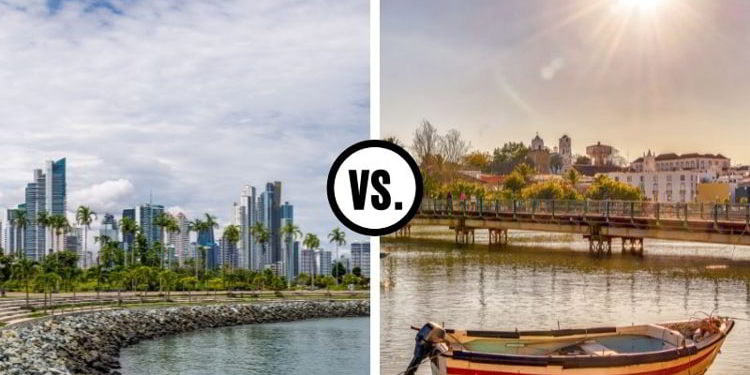Kathleen and I are en route today from Paris to Lisbon in time to host this week’s Live And Invest In Portugal Conference.
Repositioning from the New World to the Old, as we did over the weekend, reminds me that Americans often dismiss Europe for offshore lifestyle and investment options thinking the region is too complicated or too expensive.
The truth is that some European countries can be cheaper than destinations that might much sooner come to mind for obtaining residency or investing in real estate. Portugal is one of them.
Indeed, the go-offshore opportunities in Portugal are many, ranging from real estate investment in short-term rentals and renovation projects to residency and citizenship programs of note.
Panama, where I spend at least half my year these days and where I’ve been investing for more than 20 years, is, for many, a granddaddy offshore haven.
How does Portugal stack up against the competition?
Here’s an offshore-flag-by-offshore-flag comparison…
Panama vs. Portugal: Real Estate Investment
Property markets in Portugal sailed through the pandemic. Prices have appreciated steadily over the past two years, and markets have remained active and liquid with people buying remotely thanks to video walk-throughs.
The country changed its Golden Visa requirements disqualifying the more active markets along the coast, including Lisbon and Porto. That has changed the focus for Golden Visa buyers.
Property prices in general in Portugal remain low for Europe, but they aren’t the absolute bargain they were when I bought back in 2015. New construction or the lack thereof is one reason prices have remained strong.
Net rental yields are down from when I bought in 2015, as well. You can find properties netting 5% or more annually, but they are rare. More realistic right now is closer to 4%.
Still, for those wanting to be in Europe, Portuguese real estate offers excellent value.
Panama, on the other hand, is offering up pandemic bargains. One developer I know had to repossess units from buyers who weren’t able to keep up with payments. He’s re-releasing these at relative bargain pricing.
Similar story for another developer whose third-party investor bailed on the project. Those units are on sale now at a discounted US$2,000 a square meter.
The short-term rental market has come back strong in Panama and contacts in the industry report a growing number of people looking to move to Panama but not buy… meaning long-term rental demand, as well. You should expect net yields in the range of 5% to 8% in most areas.
Neither Lagos nor any of the other towns along Portugal’s Algarve coast can compete with Panama City for access. On the flip side, Panama City doesn’t have the Old World charm of Lagos and the rest of the Algarve.
The primary benefit you have buying in Portugal right now is thanks to the currency. The dollar is roaring in euroland.
Panama vs. Portugal: Residency
Panama offers more than a dozen residency visa options and qualifying for them can be easy… but not cheap. Between government fees and attorney costs, expect a pensionado residency visa to run you about US$3,000 all in.
You need at least US$1,000 a month from a pension or Social Security to qualify for Panama’s retirement visa. In Portugal, you need 1,200 euros. A couple in Panama needs US$1,250, 1,500 euros in Portugal.
The cost of applying for a resident visa in Portugal will run you about the same as in Panama. For this fee, you’ll also get help from your immigration attorney setting up a bank account, obtaining the required tax ID number, and other processes related to becoming a legal resident.
Panama vs. Portugal: Citizenship
Pensionado residency status in Panama didn’t originally lead to citizenship, but pensioners petitioned for that to change and, in theory, can now qualify. The requirement is five years of permanent residency status. I don’t know any pensionado residency holders who have applied for citizenship in Panama so cannot speak to the ease or the speed of the process.
I do, however, know a couple of people who applied for citizenship under a different residency program after their five years of permanent residency. In one case, the naturalization process took more than three years. In other words, don’t expect to have that second passport from Panama quickly once you’re eligible to apply.
Portuguese residency can lead to citizenship after five years of legal residency… and, fascinating and charming to me, after 10 years of illegal residency. If you’re able to get away with living in Portugal for 10 years without formalizing your status, the Portuguese seem to think you deserve the chance to continue. I don’t recommend putting the theory to the test.
A Portuguese passport is an EU passport, meaning that, once you’ve qualified for one, you could live and work in any EU nation. An EU passport is one of the world’s most useful travel documents, allowing for visa-free to more destinations than a Panamanian passport.
In both cases, you’ll need to show you have “settled” in the country and have spent significant time in the country. You can’t get residency as a backup plan, spend the minimum time in the country required to maintain your residency (one day every two years in the case of Panama), and expect to have your naturalization approved.
Panama vs. Portugal: Taxes
This is where Panama eclipses most competition. With its jurisdictional approach to taxation and tax exemptions for bank interest and agricultural income as well as tax incentives for tourism projects and businesses operating in certain targeted zones (Panama Pacífico, for example), Panama makes it possible for you to organize your life and your business so that you and it pay little or no tax.
Portugal is not a no-tax or even a low-tax jurisdiction, but it does offer options for reducing your tax burden. Specifically, the country has what they call the Non-Habitual Resident (NHR) Program.
Under the NHR, as a new resident in Portugal, you receive a break on taxes on most if not all of your income for 10 years. I recommend seeking local tax advice to understand how this would play out given your circumstances before applying. As Portugal taxes residents on worldwide income, the NHR tax exemption can be an important advantage.
To qualify for the NHR program, you must not have been resident in Portugal at any point during the previous five years.
Lief Simon
Editor, Offshore Living Letter










